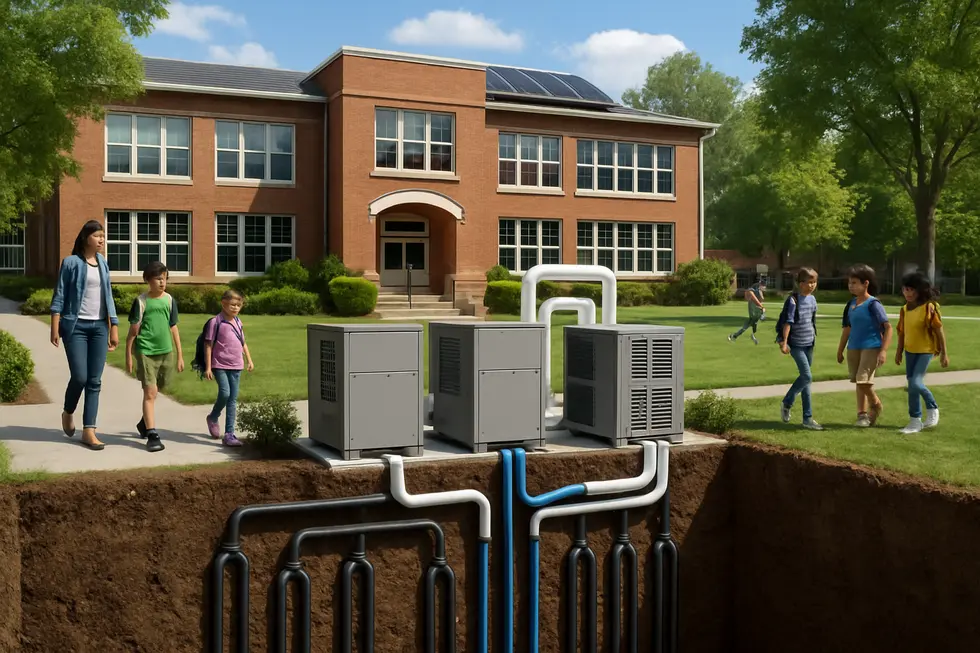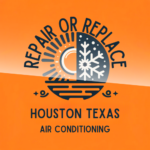The quest for sustainable and cost-effective climate control has driven schools to explore innovative HVAC solutions. Geothermal systems stand out for their efficiency, environmental benefits, and adaptability, making them a game-changer in educational settings. By integrating geothermal technology into school HVAC systems, districts can reduce energy costs, improve indoor air quality, and promote eco-friendly practices. This article delves into how geothermal systems are reshaping air conditioning in schools and the broader implications for homeowners considering similar sustainable HVAC upgrades.
Harnessing Geothermal Energy for School HVAC Systems

Modern educational facilities are increasingly turning to geothermal HVAC systems to create healthier, more sustainable learning environments. These systems utilize the earth’s stable underground temperatures, providing efficient heating and cooling for school buildings. At the heart of this technology are underground loops—long coils of piping buried beneath the ground’s surface—that act as natural heat exchangers. These loops absorb or release heat during seasonal changes, maintaining a consistent indoor climate regardless of outside weather conditions.
The visual landscape of a school equipped with geothermal technology showcases a blend of green innovation and practical engineering. The school buildings often incorporate visible elements of sustainability, such as solar panels or green roofs, harmonizing with the underground loop infrastructure. The subterranean loops are typically arranged in large, serpentine patterns that extend across open earth areas on campus. Their presence signifies a shift toward eco-friendly design, emphasizing energy conservation and cost savings.
Inside the school, climate control units are designed to work seamlessly with the underground loops. These units efficiently transfer heat to or from the earth, regulating indoor air quality and temperature with minimal energy consumption. Visible indicators of this advanced system might include sleek, modern control panels that allow staff to monitor performance and adjust settings remotely. The integration of green technology goes beyond just functionality; it’s part of a broader initiative to educate students about environmental responsibility.
Photorealistic renderings of such a facility highlight the harmony between the built environment and natural elements. The school’s façade combines traditional architectural features with contemporary green accents, reflecting a commitment to sustainability. The underground loops, often covered with grass or native vegetation, are discreet but vital components of the campus infrastructure. Students and staff benefit from a stable and comfortable atmosphere, fostering better learning outcomes and overall well-being.
This innovative approach to climate control reduces reliance on conventional HVAC systems that typically consume large amounts of electricity. By harnessing the earth’s natural heat, geothermal systems significantly lower greenhouse gas emissions associated with energy production. Additionally, they offer long-term financial benefits for educational institutions by decreasing energy bills, allowing funds to be allocated toward educational programs and facilities improvements.
Incorporating geothermal energy in schools exemplifies how modern technology can transform traditional infrastructure. It demonstrates a commitment to sustainability and resilience, preparing students to understand and value renewable resources. As the awareness of climate change grows, such forward-thinking campus designs will become increasingly common, setting a standard for eco-conscious education environments. For more insight into how innovative HVAC solutions can enhance your facility’s efficiency, visit this resource to explore current trends and tips.
Benefits and Technical Advantages of Geothermal HVAC in Schools

A geothermal HVAC system installed in a school can be visualized as an intricate network of components working seamlessly to regulate indoor climate efficiently. At its core, a series of underground loops—typically made of high-density polyethylene pipe—burrow beneath the school grounds. These loops form a closed, circulatory pathway for a water-based solution that exchanges heat with the earth’s stable subsurface temperature. When the system is in heating mode, the fluid absorbs heat from the ground and transports it upward to the climate control units inside the school. Conversely, during cooling seasons, the system extracts heat from the indoor air and dissipates it into the earth through the loops.
The heat exchange process begins at the heat exchangers—large coils or plates housed within the climate control units—where the temperature of the refrigerant or water-based fluid is either raised or lowered based on current needs. These exchangers connect directly to the underground loops via durable piping, allowing for efficient thermal transfer. The indoor climate control units—sometimes called geothermal heat pumps—are essential for distributing conditioned air throughout the classrooms and common areas, ensuring uniform temperature and humidity levels.
The system operates dynamically, utilizing sensors and advanced controls to optimize performance. When heating is required, warm heat extracted from the earth is pumped into the building, reducing reliance on traditional electrical or gas-powered systems. During cooling, heat is transferred from indoor spaces into the earth via the same underground loops, effectively cooling the structure with minimal energy expenditure.
One of the key technical advantages lies in the system’s high coefficient of performance (COP), meaning it delivers more heating or cooling output per unit of energy consumed compared to conventional systems. This efficiency derives from the earth’s constant temperature—generally between 50 to 60 degrees Fahrenheit—regardless of seasonal fluctuations, providing a stable thermal source or sink.
Furthermore, underground loops can be configured in horizontal or vertical arrangements, depending on the available land area and installation preferences. Vertical loops utilize boreholes drilled deep into the ground, ideal for limited spaces, while horizontal loops spread over a broader area at shallow depths. Both configurations support long-term durability and low maintenance requirements.
Integrating these geothermal components into a school’s existing HVAC infrastructure offers substantial benefits, including significant reductions in energy costs, lower greenhouse gas emissions, and increased system lifespan. Systems are designed with redundancy and smart controls, allowing for maintenance flexibility and real-time performance adjustments. For schools committed to sustainability and operational savings, adopting geothermal HVAC technology not only transforms air conditioning but also advances environmental stewardship. To explore how these advanced systems can be tailored for educational facilities, refer to detailed case studies and technical specifications available at [information resource] for deeper insights.
Final words
Implementing geothermal HVAC systems in schools marks a significant step toward sustainable, energy-efficient climate control. Not only do these systems deliver substantial cost savings on energy bills, but they also contribute to a healthier learning environment and environmental conservation. As more educational institutions adopt this technology, homeowners can explore similar geothermal upgrades to enhance their HVAC systems, leading to greater energy independence and environmental responsibility.
Upgrade your home’s HVAC system with the latest geothermal technology. Contact Houston Texas Air Conditioning: HVAC Repair, Installation & Maintenance today!
Learn more: https://houstontexasairconditioning.com/index.html#schedule_form
About us
Houston AC Repair & Installation Experts
Top-rated AC repair and installation in Houston. Our licensed, insured technicians offer flat-rate pricing and reliable service. Benefit from our A+ rated BBB accreditation and cost-saving AC tune-ups. Trust us for efficient and affordable HVAC solutions.
